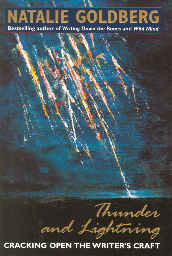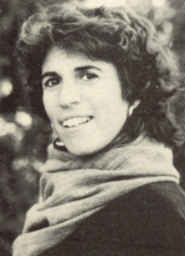Coincidence or deep structure? An event will occur to us that seems insignificant at first, and
then gradually we realize that the whole structure of the rest of our life depended on that event. Was it
a coincidence or a deep structure? What does the phrase deep structure mean anyway? Was this event
part of a plan that we came into this lifetime with? If so, the other person involved must have also come
into this lifetime with a matching plan. If karma involved working out and rectifying mistakes from a
previous lifetime, the other person involved must somehow meet us during this lifetime, and since the
meeting was planned in a state we are unconscious of once we are born, the meeting will seem to be
coincidental for the very good reason that we have no memory of the deep structure during which we
did the planning.
[page 32] But the deep structure what was it really all about, anyway, this New
York Jewish woman meeting a Japanese Zen master? was slippery, like trying
to catch inky fish in the middle of the night.
Our individual karmic destiny, rightly understood, provides an "inner rightness or structure that
we carry within our psyches." That was what Natalie found out: that fiction, where she thought imagination could let her do anything, had to conform to her inner sense of rightness or structure. Characters in
novels we write have a karmic destiny which evolves on its own, often to our surprise. It is part of our
karmic destiny a part that is able to express itself through our writing. We may attempt consciously
to say no to it, but the deep structure breaks through finally and shines out of the pages of our work.
[page 40] One of the reasons we read a story is to bring forth from within ourselves
that glow, that yes. The tale affirms something large within us. The structure of
Banana Rose had become bigger than my little will. Anna was no longer mine. She
had stepped into the life of fiction, and karmic determination, or plot, took over.
She had to die no matter how unfair it seemed to me, no matter how wonderful she
was. The truth of the story was deeper than my love or desire for things to be
different.
This next passage reminded me of how teenagers in every generation always look alike. In their
struggle to be different from their parents, they take to fashions that make all of them look alike. But let them get into the military service, receive close haircuts, and wear uniforms, and then we can see their uniqueness.
[page 42] Suzuki Roshi once said to his sixties American students that the way they
dressed with beads, long hair, brightly colored clothes they all looked alike.
Shave your heads, wear black robes, he said Ah, now I can see your uniqueness.
Natalie came to see that the path of the writer and the monk were the same. One sought
publication and the other enlightenment, both of which is "nothing less than ego's great
disappointment." Both the writer and the monk have to learn to enjoy the path to the edge of the cliff
because there is nothing to hold onto in the end. (Page 44)
In the chapter "Shall We Plot Along" her friend Kate helps her to understand how to write a plot
by demystifying the process.
[page 52] "Plot is what happens, Nat. A woman sitting and having a cup of tea is
good for one sentence. Plot is a sequence of actions that compels a reader to want
to know more. It's a seduction, bread crumbs dropped deeper and deeper into the
woods into the unknown."
[page 53] "This is what a good plot feels like," Kate murmured. I leaned in, hungry.
"You don't want to skip ahead. Everything feels germane. You are afraid you'll
miss something important. You want to keep reading. You plan to go to bed early
so you'll have more time with the book. You stay up too late. You are as changed
by the story as the characters are.
Nell was the main character in the novel Natalie was writing, but she wouldn't cooperate with
Natalie. "Once I'd given my characters guts and will, I found that none of them wanted to go where I
directed them." Finally she resorted to pretending that she was Nell and Nell was writing her own story.
In this next passage Natalie described the key day when Nell finally took over the pen. Is this a transition
that comes in every fiction-writer's life?
[page 60] And then one day, lo and behold! It was early spring, March, I had on a
gray crewneck sweater. Outside the café window snow was lightly dusting Taos
Plaza, the lighting was poor over the wood table, my left hand held a brown jug of
lukewarm mint tea, and as I wrote, Natalie faded out. She was gone, disappeared,
and this character Nell Schwartz was telling her own story through my hand. I was
no longer doing writing practice. Nell was doing writing practice, telling all about
her adventures, her boyfriend, her girlfriends, her home, her parents, her sister.
Even now I can remember the sensation of feeling unglued I experienced a
heady freedom. I no longer existed. I could lay down my burden and let the kid
walk on her own two feet.
In her chapter "Smack! Into the Moment" we get a reminder that the power of literature has
nothing to do with logic or science or laws of nature which is why as a physics major in college I
avoided literature as much as possible. It seemed trivial to be concerned about the present moment when
I was studying eternal verities, or so I thought. I missed the great gift of literature because I wanted
something that is not part of literature.
[page 77] Literature gives us the great gift of the present moment. As we read we
enter the author's mind and follow it like a train on its tracks. If the author derails
gets lost so do we. But if she is alive, steaming along in her full power, we
chug along with her deep into pleasure country. She is taking us far out or far in
and we're there! no place else. Mind to mind. The writer is concentrating she
has been practicing a lot and we get the benefit. Mind reflects mind. If we read
someone who is awake, it helps to wake us up. And think of it: while you read
you're not spending money, getting into a fight, creating karma. What better gift
can you give yourself than to arrive in the present moment? I know of no greater
delight, and I have lived a rich, expansive life.
For many years, I couldn't tell the difference between what was alive and what was dead. I
applied all my reasoning and logic and couldn't make sense of literature. What's the attraction, I
thought? I could write technical articles for national magazines because of my logical mind. But since
"mind reflects mind" only logical minds could comprehend what I was writing about. A feeling type
would say that I was disconnected if they read my writing.
[page 84] If he's disoriented, we become disoriented. If he's not connected, we
disconnect. But if the writer is present, our mind zooms in like a cat about to
pounce. We become glued to the words. Noplace else on earth we want to be.
Reason and logic are dead they cannot tell the difference between something thats dead, such as mathematical equations, and something thats alive, such as literature. I know that now. What I was trying to figure out in my head
could only be calculated in my gut, in my feeling response, something whose existence I had yet to
discover at the time. Natalie said that when she listens to students read their works, if she finds herself
drifting it is usually an "indication that their writing has become disconnected." There is the other extreme she found, when the reader disconnects because the writer comes too close.
[page 89] He holds his gaze on every detail of the eagle his talons, plumage, neck,
beak, black pupil and the eagle looks back at him: inside him, he says. The
students felt touched and it scared them.
Fiction or non-fiction. These are not the mutually exclusive categories I once made them out to
be. Natalie quickly disabuses her writing pupils of that notion as when someone from the back of the
room calls out, "But this is nonfiction."
[page 93] I lean in close as if to tell the real secret of writing. "Don't be so rigid. If
you learn a good move in one genre, use it in another. Fiction, nonfiction," I toss
my head, "are a breath away from each other. Grab the reader's mind whatever
it takes."
The man was furious. The woman was shocked. Neither of these two sentences tell us anything
specific. Exactly how did the man show he was furious? What told an onlooker that the woman was
shocked? The man's eye bulged out from his bright red face as he slammed his fist on the table. The
woman stared into space and the color drained from her face. Compare the two versions of the same
description. One is carried by a flattened abstract word, the second throbs with visual and visceral words. The former is dead and listless, the latter alive.
[page 166] We have to communicate, get the picture across. How best to get the
result? Practice freezing moments or situations as photos. Step through the
abstract names for emotions shocked, furious and touch the details.
In terms of Natalie's wonderful metaphor: Let out all your wild horses! This next passage best illustrates
her enlivened writing style. One can learn by modeling one's writing style after Natalie's. One need
never remember her advice if one models her writing style because the two are essentially one: what she
says in content about how to write, she demonstrates in process as she writes..
[page 159] Writing practice lets out all your wild horses. Everything you never
dared to utter didn't even know you thought comes galloping and whinnying
across the page. This is good. You become connected with a much larger force field,
one where you're not in control. Suddenly your little will is not doing the writing,
but instead writing does writing. The trees and skies, cemeteries, nightclubs, barns,
old loves and worn shoes step forward and take their true positions.
Okay, you think, "But does everything in our book have to alive?" Natalie asks and answers this
question below:
[page 183] Why not? We don't want our reader falling asleep alongside us.
I've read books that put me to sleep and books that keep me awake. Natalie Goldberg's books
keep me awake. The consistency of her style with her content, her narrative drive, and her enlivened
prose dance before me on the page as three members of a ballet troupe who offer me their service for
my own writings. Thank you, Natalie!
~^~
Any questions about this review, Contact: Bobby Matherne
~~~~~~~~~~~~~~~~~~~~~~~~~~~~~~~~~~~~~~~~~~~~~~~~~~~~~~~~~~







